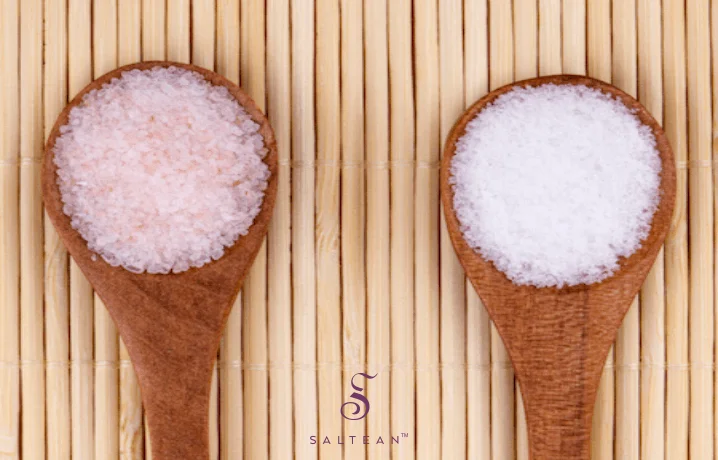


Salt is a staple in kitchens worldwide, used for seasoning, preserving, and enhancing the flavors of foods. Two popular varieties of salt are Himalayan salt and pickling salt. While they serve distinct purposes, comparing them can help determine which is better suited for your needs. This article explores the differences, benefits, and best uses for Himalayan salt and pickling salt.
Himalayan Salt: Himalayan salt, often referred to as pink salt, is mined from the Khewra Salt Mine in Pakistan, the second-largest salt mine in the world. This salt is renowned for its pink hue, which comes from trace minerals such as potassium, magnesium, and calcium. Himalayan salt is minimally processed and remains in its natural form, which retains its mineral content.
Pickling Salt: Pickling salt is a pure, fine-grained salt specifically used for pickling and canning. It is devoid of additives, such as iodine or anti-caking agents, which can cause discoloration and cloudiness in pickling solutions. The absence of additives makes it ideal for preserving the crisp texture and vibrant color of pickled vegetables.
Himalayan Salt: Himalayan salt is praised for its rich mineral content, containing up to 84 trace minerals. These minerals not only contribute to its pink color but also offer health benefits. For example, magnesium supports muscle and nerve function, while calcium is essential for bone health. The mineral composition of Himalayan salt makes it a favored choice for those looking to enhance their nutrient intake naturally.
Pickling Salt: Pickling salt is essentially pure sodium chloride. It lacks the additional minerals found in Himalayan salt. While this makes it less nutritious, its purity is crucial for its intended use in pickling. Additives found in other salts can negatively affect the preservation process, so the purity of pickling salt is its main advantage.
Himalayan Salt: Advocates of Himalayan salt argue that its mineral content offers various health benefits, such as improved hydration, better respiratory health, and balanced pH levels in the body. The presence of trace minerals can help maintain electrolyte balance, support proper muscle function, and contribute to overall wellness. Additionally, Himalayan pink salt is often used in spa treatments and salt lamps, which are believed to provide relaxation and air-purifying benefits, though scientific evidence supporting these claims is limited.
Pickling Salt: While pickling salt does not offer the same range of minerals as Himalayan salt, it plays a vital role in food preservation. Properly pickled foods can retain their nutrients longer, and the high sodium content of pickling salt inhibits the growth of harmful bacteria, ensuring the safety and longevity of preserved foods.
Himalayan Salt: Himalayan salt is versatile in the kitchen. Its coarse texture and unique flavor make it a favorite for finishing dishes, adding a subtle mineral taste that enhances the overall flavor profile. It can also be used in cooking, grilling, and baking, and its coarse crystals are often used in salt grinders. Additionally, Himalayan pink salt blocks are used for serving and cooking, imparting a mild saltiness to foods.
Pickling Salt: As its name suggests, pickling salt is specifically designed for pickling and canning. Its fine texture allows it to dissolve quickly in water, creating a clear brine that doesn’t cloud or alter the appearance of pickled foods. Beyond pickling, it can also be used in any recipe where a fine, additive-free salt is desired, such as in baking or making brines for meats.
Himalayan Salt: Himalayan salt is hand-mined and minimally processed, resulting in a lower environmental footprint compared to industrially processed salts. The traditional mining methods used in extracting Himalayan salt involve less machinery and energy, making it a more eco-friendly option.
Pickling Salt: The production of pickling salt typically involves industrial processes that can have a greater environmental impact. These processes may include extensive mining, refining, and the use of machinery, which contribute to habitat destruction, water pollution, and carbon emissions.
In conclusion, whether Himalayan salt or pickling salt is better depends on your specific needs and preferences. Himalayan pink salt offers a rich mineral content and a range of potential health benefits, making it a great choice for general culinary use and holistic health practices. Its unique flavor and aesthetic appeal also make it a popular finishing salt.
Pickling salt, on the other hand, excels in food preservation. Its purity and fine texture are essential for creating clear brines and maintaining the quality of pickled foods. While it may not offer the same nutritional benefits as Himalayan pink salt, its role in preserving food is invaluable.
Ultimately, both salts have their distinct advantages. By understanding their differences and applications, you can choose the one that best suits your culinary and health needs.